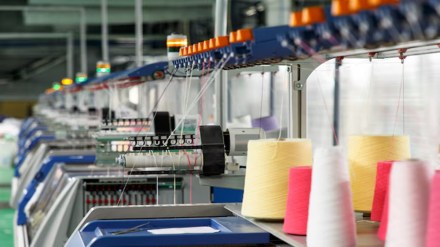Indian textile and leather goods exporters see the 90-day tariff relief as an opportunity to clear their backlogs at lower duties, but don’t expect a significant boost in export orders. According to industry insiders, US buyers remain in a ‘wait-and-watch’ mode amid subdued demand and uncertainty over Washington’s ongoing trade negotiations with other countries.
“Recent developments bring some relief, and ongoing order dispatch issues may begin to ease,” said Prabhu Dhamodharan, convenor of the Indian Texpreneurs Federation (ITF), a Coimbatore-based association that represents the entire textile value chain, including standalone spinning units, weaving companies, and exporters of apparel and home textiles.
However, he noted that consumption continues to be under pressure, as the average landed tariff on consumer goods—including textiles—into the US exceeds 20%. This includes a baseline 10% tariff on all countries and over 100% on Chinese imports. “Normally, in uncertain times like this, retailers are very cautious with order placements. It all depends on actual retail sales. We’ll still have to wait and watch,” he added.
On Wednesday, US President Donald Trump paused the implementation of reciprocal tariffs for 90 days for all countries except China, which now faces a 104% tariff. However, the baseline 10% duty that came into effect on April 5 remains in place across the board.
“We can only export based on demand and our existing capacity,” said A Sakthivel, Vice Chairman of the Apparel Export Promotion Council. Sakthivel, who also heads Tiruppur-based Poppys Knitwear, said the tariff window might help advance shipments by around 10 days, and exporters are focused on dispatching only pending orders during the relief period.
He added that Indian exporters are more closely watching the outcome of bilateral trade agreement (BTA) talks with the US, which could offer longer-term gains for the industry. “One thing is clear—US buyers now have a sense that India will enjoy more favourable tariff treatment compared to other Asian countries, especially China,” he said.
In 2024, the US imported $107.72 billion worth of textiles, including $80 billion in apparel alone. China accounted for the largest share at 21%, followed by Vietnam (19%), Bangladesh (9%), India (6%), and Sri Lanka (3%). Under the new tariff structure, India’s key competitors—Vietnam (46% tariff), Bangladesh (37%), and Sri Lanka (44%)—face significantly higher duties. Over 75 countries are currently in talks with the US to lower their tariffs.
“Textile is one of the sectors with the least import dependency for raw materials and intermediate goods, and US buyers are starting to see that as a strategic advantage when partnering with India,” Dhamodharan said.
Israr Ahmed of Chennai-based Farida Group, a leading leather goods exporter, said the tariff pause has brought welcome relief to the industry, which had been fearing order cancellations under the new structure. “Order cycles in our industry range from 90 to 120 days, and most exporters are now trying to push orders within that 90-day window,” he said. While India holds a relatively small share in global leather and footwear exports, he believes buyers are beginning to recognise the need to diversify away from countries like China and Vietnam.
India exported leather and leather products worth $4.1 billion between April 2024 and February 2025, of which $870 million went to the US, as per government data. Ahmed, a former vice-president of FIEO, said India stands to gain a larger share in the long run—provided high tariffs on competing countries continue.
“The tariff pause is not yet a game-changer for India,” said a top official at a Noida-based leather products exporter. “Some orders are still on hold, and new ones that do come in are mostly exploratory—to test whether India can deliver at scale,” the person added.
